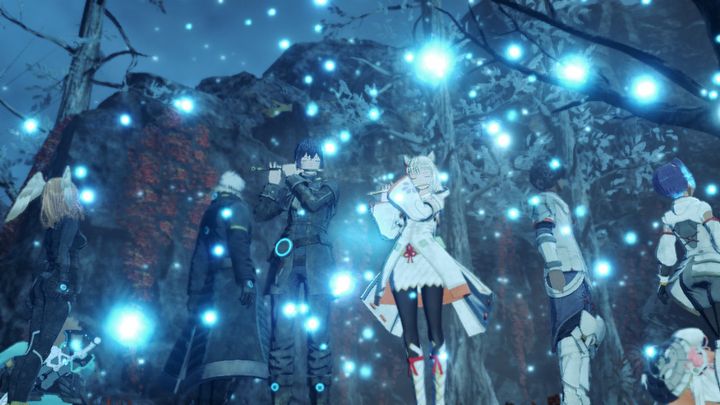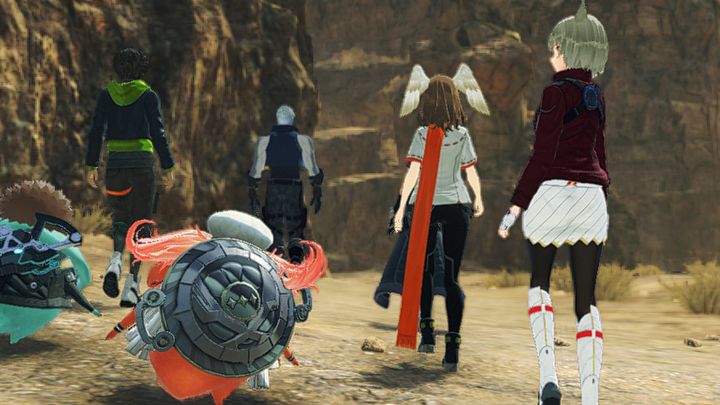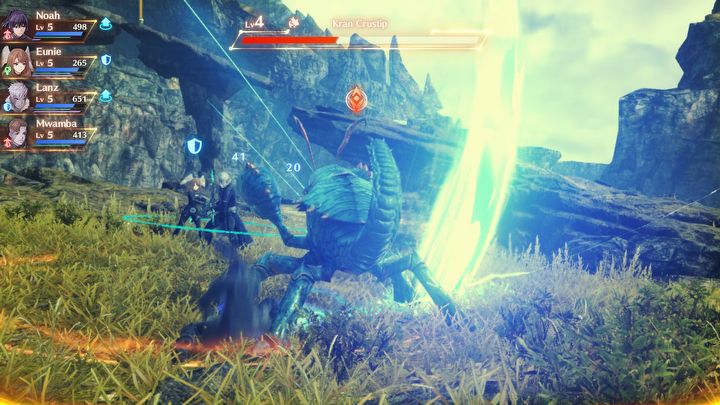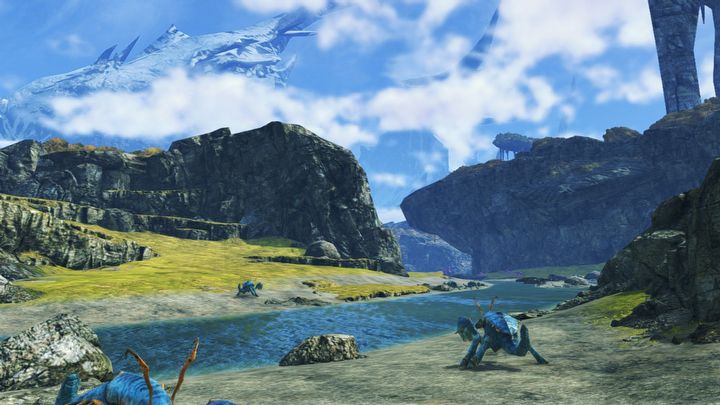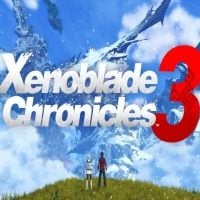Xenoblade Chronicles 3 Review: A Monumental Adventure
Xenoblade Chronicles 3 brings you more emotions, more conflict, and a combat system that blends everything its past installments introduced for an even more customizable experience. This is a JRPG you do not want to miss.
The review is based on the Switch version.

Xenoblade Chronicles 3 is a massive game. The lands you travel through are some of the biggest the series has seen, its robust combat system features plenty of layers to master, and its story is an epic tale that makes you think hard about various philosophical ideals. It’s a masterpiece of a game and constantly pushes the Switch to its limits considering just how much there is to see and experience.
Featuring a cast of different but relatable characters, this third entry in the series continues to give fans a JRPG that focuses on narrative with plenty of cutscenes to sit through but also provides some formidable battles that test what you’ve learned. It’s a rewarding experience that sometimes drags on more than you would hope, but its complexity and added features make for a memorable experience fans and newcomers are sure to appreciate.
Thought-Provoking Stories
Its story is Xenoblade’s central pillar, and it’s one that is easy follow along yet it will make you think long and hard about what it means to live—it’s that deep. Its central cast comes from two warring nations—Agnes and Keves—who train soldiers to fight without little explanation or purpose. Those who are born perform their duties to their faction for one term—ten years—before their clocks run out and they perish. Those that survive long enough to the end of their term get to meet their queen at a fancy ceremony where music is played and their essence just fades away.
As a player watching these early game cutscenes, the world of Aionios seemed organized, mysterious, and very systematic but it made me wonder what was hiding behind this veil of duty. Is life nothing but war for these people? Within a few hours in, it was as if the game listened to what I was thinking and quickly flipped this way of living on its head by introducing a main conflict that persists throughout the game and one that brings with it so many more questions as well as themes of friendship and identity.
- An emotional story filled with memorable moments and characters;
- Talented voice acting that draws you in;
- Layered combat that provides you with plenty of ways to customize your experience;
- An amazing soundtrack.
- Cutscenes can be too much sometimes;
- Visuals and textures don’t look their best all the time;
- Combat can get overly complicated in the beginning.
Right away, two teams from these opposing factions meet up, engage in battle, but then need to return to one another as they become the only ones who can understand what is truly happening in Aionios and the true intentions of those in power. It’s a common twist-of-fate seen countless of times, but the game keeps this theme fresh and alive by constantly introducing you to new characters, side conflicts, and a cast that keeps the story so engaging and full of depth.
Its two main protagonists, Noah and Mio, are foils of each other as are the other four characters in your team, but despite their differences, they start to work with each other to not only develop their own battle tactics and powerful combo attacks, but they also help us understand how similar both nations really. Each character also has a unique personality that comes straight out of a Japanese anime, but their flaws also show another side of their world and that it’s okay to be different, to make mistakes, and to not always know the answers to everything.
Cinematic Splendor
Now, the series is known for its cutscenes and Xenoblade Chronicles 3 is no different. Much of the story is told through scenes that are acted by a talented cast that injects personality into each character to further make you believe in their struggle. Stoic Taion clashes with the ever sassy Eunie whereas the short-tempered Lanz shows his softer side around the energetic and lively Sena. Noah and Mio act as the anchors for their team and their past profession as off-seers, those who would send off the spirit of fallen comrades, has hardened them and given them a maturity the others don’t necessarily have. It’s a great balance of personalities, emotions, and temperaments that offer you someone to root for.
While these cutscenes are essential in telling the story, the thing is—there is a lot of them and sometimes they come at you too frequently between battles. There is also a lot to take in, people to remember, and events to think about so if you don’t pay attention to something you may miss out on some vital information or you may just get bored hearing about something that you already knew was going to happen. There is some redundancy in what you have to sit through, and for a game that can take you over 70 hours to beat, these can make up a big chunk of that time.
With over 70 hours of playtime—a lot more if you want to unlock everything the game has to offer—Xenoblade Chronicles 3 is a hearty game that gives you a lot to chew on. Play it for yourself and the game will reward you with an emotional story, lovable characters, and a soundtrack that will stick with you longer than it took to see the credits roll.
The world of Aionios is also filled with areas to explore and to get lost in—but thankfully, you won’t get too lost as an optional guide will always point you in the right directions. The many biomes you will explore are unique and come with their own set of monsters to fend off against, but its sprawling landscapes ranging from barren deserts to lush forests to ruined cities look amazing and definitely push the Switch to its limits.
So much so, in fact, that you will notice frame drops during certain action-packed battles and texture popping due to the system just trying to keep up. Running at 30 frames per second, the visuals are colorful and certainly welcome you to Aionios, but they do look fuzzy and blurry at times especially if you play the game in handheld mode. Its soundtrack, however, with its array of flutes mixed with electric instruments is a magnum opus of melodies that stick with you throughout your epic adventure and matches the mood perfectly.
Layered Combat Features
Its combat system, just like the story, starts off simple but continues to layer on new features that turn it into an engaging way to keep the action and plot going. Similar to past games, battles involve your team of six (later seven) characters engaging with an enemy and attacking with a mix of standard blows and special skills called arts you can pull off when charged up. Interrupting an auto attack to pull off a special art can sometimes do more damage, and linking attacks with those of your team members can also incapacitate the enemy and offer more ways to avoid damage.
The game slowly shows you its combat system as you progress through the game with quick tutorials that explain what each new feature does. This not only eases you into combat, but it also lets you get comfortable with one part of battle before things get more complex—and they do. Now, while this combat system gives newcomers and fans of the series plenty of options to choose from, it can come across as intimidating considering how many tutorials you do encounter even after 10 hours into the game.
In fact, the battlefield itself can sometimes look messy with numbers (damage points) popping up all over the place, blue lines showing enemies attacking defenders, and red lines showing vulnerable characters being targeted. Because you can also change to different characters during battles, things can either get very chaotic or dull if you don’t do anything but auto attack—but why would you? The best fights are those you control by swapping to characters you want to focus on and giving orders to your AI-controlled team to keep things organized and on pace. It takes some getting used to, but being able to move around your surroundings during a battle also helps reorient you to your surroundings. You can even run away if things don’t look promising so you don’t really lose much by engaging with most enemies.
Even though your characters start off as set classes (attacker, defender, and healer), you will eventually unlock the ability to swap them out and learn abilities from other classes the more you play as them. These can be equipped when you decide to change classes later on offering you the chance to customize your party the way you want to battle. I kept mine balanced with two of each class, but at times I experimented and had a party with more healers or more attackers and noticed a shift in how long it took to complete some fights. The game’s difficulty increases at a good pace so grinding is never needed unless you want to fight tougher enemies to level up more quickly.
Your seventh character slot can be filled by a handful of special characters called Heroes you can discover as you play, and they offer hybrid class types and some helpful arts worth learning. While you can’t play as them, you will need to keep them in your party and pair them up with a character you want to pass on their class to for them to eventually learn it. There is a lot of emphasis on team customization here, and all these options mean that battles won’t ever be boring considering the various arts and combos you can pull off. What does get boring is hearing the same victory lines, though, especially since they repeat too much for their own good.

Our reviews are featured on Metacritic.
Another battle feature is the addition of an interlink ability that lets two characters essentially fuse together to become a giant formidable fighter called an Ouroboros who can pull off unlimited skills until their attack gauge overheats. There is no penalty for calling for this fusion whenever you want during a battle, but it doesn’t always offer much to a situation since it can take an essential character out of battle when they could be needed for healing or even drawing the enemy’s attention. Instead, calling for this fusion is great during boss fights when you need some added firepower or when you want to save a weakened teammate and take them away from the field for a bit to recover. It’s another tool in a complex combat system that gives you more to play with.
Final Thoughts
Aside from following the story and engaging in plot-related battles, the game also offers plenty of side quests for special crafting items and even Heroes to unlock. Yes, there are the usual fetch quests that have you roaming the land for some ingredient to hand off to someone, but there is a better balance of quests here that actually tie into the story and make for a more fulfilling way to learn about the conflicts those in other colonies are facing. In fact, quests for Heroes feel like whole arcs you are can discover and even the meager ones still rewarding even though sometimes you are just running somewhere and then running back. But hey, at least you can fast travel a lot more now.
With over 70 hours of playtime—a lot more if you want to unlock everything the game has to offer—Xenoblade Chronicles 3 is a hearty game that gives you a lot to chew on. Its biggest flaw is that its cutscenes can take you away from the action despite their attempt to draw you into its magnificent, yet sometimes fuzzy-looking world. Battles themselves can also seem confusing at first and excessive with all the features they introduce, but you never really have to focus on them if you don’t want to. Play it for yourself and the game will reward you with an emotional story, lovable characters, and a soundtrack that will stick with you longer than it took to see the credits roll.
Xenoblade Chronicles 3
Xenoblade Chronicles 3 Review: A Monumental Adventure
Xenoblade Chronicles 3 brings you more emotions, more conflict, and a combat system that blends everything its past installments introduced for an even more customizable experience. This is a JRPG you do not want to miss.

